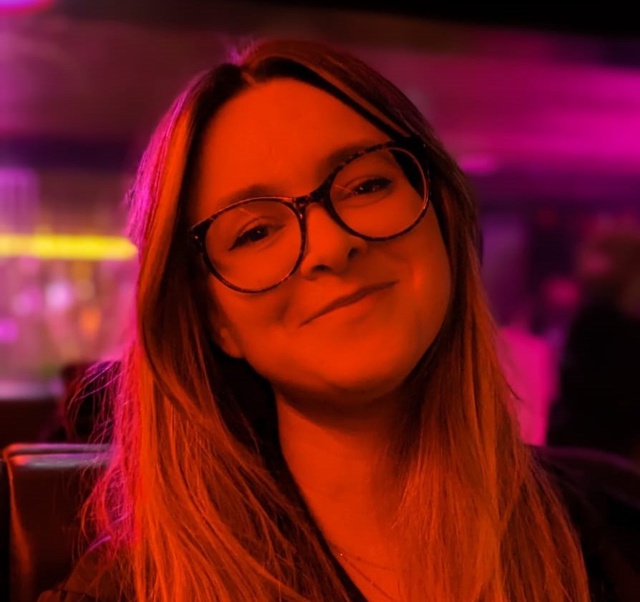What We Can All Learn From Queer Performance
06.06.24
Zoe Paskett is a freelance arts and LGBTQ+ journalist, and founder of LMAOnaise, a publication dedicated to upcoming and alternative comedy, and arts and culture newsletter Right!?.
This is the first in a series of blog posts guest-edited by Zoe about Queer performance and how we as a sector can learn from it. Next Jodie Mitchell talks about Being John Travulva, then Temi Wilkey looks at their Journey To Femme-ness & Queer Femininity In Performance and finally Tabby Lamb write on The Performance Of Gender and Being Your Truth Self
Instagram: @zoepaskett
I entered London’s cultural scene straddling two states of being. On the one hand, I was going to the Theatre with a capital T every week in my capacity as a journalist for very official publications. I was sitting in Hamlet or an Ibsen revival or something directed by Ivo Van Hove I wish I could erase from my memory, and broadly enjoying myself (Van Hove aside…). Quietly, politely, solitarily.
But the other nights… The other nights were for the other half of me. Screaming my throat raw at drag kings stripping and writhing to Pony by Ginuwine (this song was made for drag kings) and lathering themselves in limitless varieties of artistic gunge. Burlesque performers, fire-breathers, pole-dancers, poets and clowns — the resident weirdos of queer bars, where loud support isn’t just encouraged, it’s necessary.
I’m over the moon to have enlisted three of the people whose work has shaped the way I approach how I engage with theatre and comedy to contribute to Mobius’s series on queer performance. Temi Wilkey, a playwright, screenwriter and actor, is writing an ode to camp, about creating her new show Main Character Energy. Drag king and comedian Jodie Mitchell will discuss taking up space as a queer trans person through drag in the world of stand-up comedy. Finally, playwright and performer Tabby Lamb thinks about the ways in which queer style has evolved and what it means for her ability to live loudly. These three are all prime examples of how vocal support for other artists creates a better place for all of us.
The kind of appreciation that exists in queer spaces comes from a different place than in others. The feeling in a queer space, whether that is physical or more of a vibe, is that we respect a performer’s desire to share a part of themselves and that deserves to be rewarded. We encourage this vocal expression of joy because we understand how it feels to hide.
I’d love to give all audiences the same courage to be noisy in response to something they enjoy, but I get the impression they feel they’re doing it wrong. In my capacity as a comedy reviewer and enthusiast, I see a lot of audiences who are used to being shushed trying to figure out how much they’re allowed to express. Like queer performance, live comedy requires a level of loud commitment. I see no point in watching it and not laughing at the funny bits.
At queer shows, we cheer for the sake of encouragement as much as enjoyment, but that doesn’t make me any less discerning as an audience member or a critic. I don’t think performing should be a test of how well someone can withstand hostility. Why would we strive to make an environment less enjoyable? Who benefits? Not them, and certainly not me. I came out for a good time! Sure, I know how to “behave” in a West End musical. I’m not going to ruin someone else’s night by singing along, but there is an in-between, and something to be learned from queer performance spaces.
I saw it from the other side when I decided to be a drag king, an endeavour inspired in large part by Jodie and Temi’s work with drag king troupe Pecs. I’m not sure it’s a new career move for me, but I learnt a great deal.
Following my eight week course with Above Your Nerve, I stood in front of a sold-out audience, beard and excessive eyebrows drawn on, gold confetti hidden in my hat, stuffed chicken tucked in my inside jacket pocket, and introduced my alter-ego Tom Schmooze. When I heard the whoops and laughter of the crowd, I felt it in my bone marrow. I’d been terrified, but all the time I was preparing for it, I knew that this audience would support me whether or not any of it worked. And that gave me the confidence to just try.
I’m of the view that appreciation and encouragement creates great art. Fostering spaces where people are supported in their experimentation allows the exposure of truths that might otherwise stay hidden. Ideas and inspiration may sometimes come from struggle and pain, but the art itself must be nurtured. If art heals wounds, those wounds need to be tended.
I wasn’t exaggerating when I said Temi, Jodie and Tabby influenced how I engage with live performance culture. Their ability to incorporate uplifting other artists into their own approaches has taught me so much about sustaining ties in the arts world. When art is about connection, that is, really, the only important thing.
If you'd like to keep up to date with all our blog posts, important and interesting stories in the worlds of theatre, arts and media, plus job ads and opportunities from our industry friends, sign up to our daily media briefing at this link.



